
One of those items that appear on every baby gear buying guide for new and soon-to-be parents is a baby monitor. These items might have once upon a time been nice-to-haves but, for this new generation of parents, they are must-haves.
There are tons of options when it comes to baby monitors. Thus, it can be overwhelming to know which one to choose, what features to look for, and how they even work. We’re here to help with this handy buying guide, that will walk you through everything you need to know before choosing a baby monitor for your little one.
Table of contents
What is a baby monitor?
First off, let’s define what a baby monitor actually is. A baby monitor is a small electronic device that allows you to keep an eye, ear, or both on your baby from another room or even in some cases another location altogether. They all include at least two pieces: one that stays in the baby’s nursery and the other that goes with you. Some also work with an app so you can watch from your smartphone or tablet as well. You can hear the baby as they cry, stir, or giggle and check on them as needed. With video baby monitors, you can see them as well as hear them.
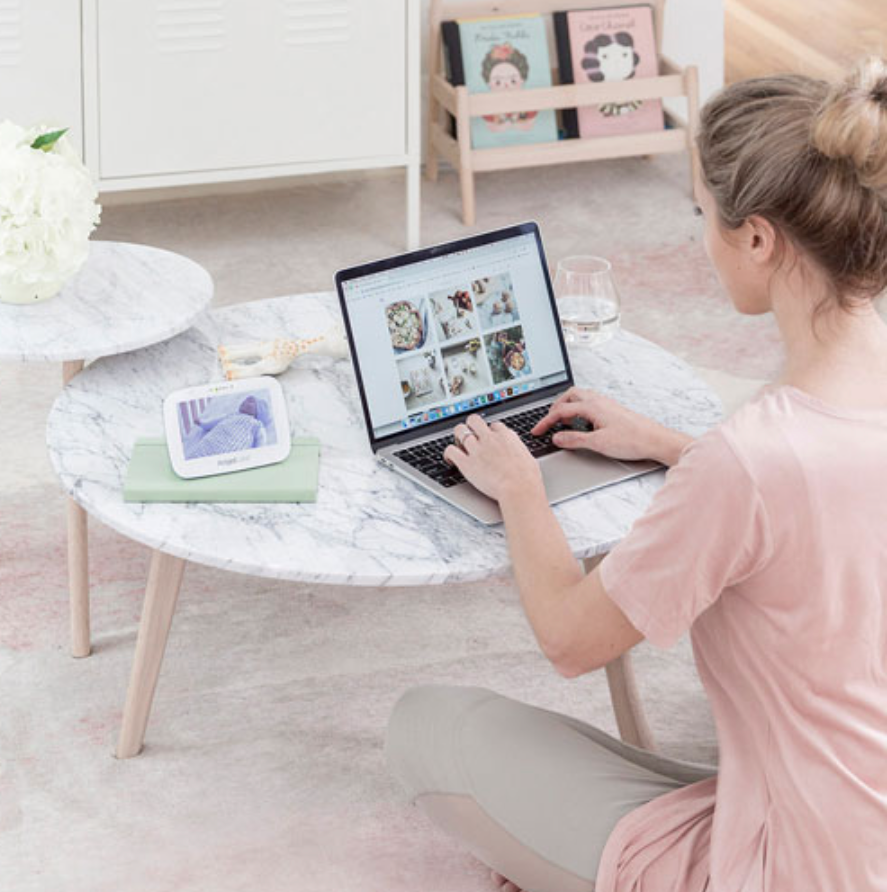
New parents love being able to see and/or hear their baby from the comfort of their own bedrooms at night so they know when the baby needs tending to. In the past, parents might have gotten up multiples times a night just to check on the baby. A baby monitor, especially a video one, makes it easy to check on them without having to go into the room.
They’re also convenient for daytime naps so you can tend to chores on a different floor of the house while keeping the monitor close by so you can hear and/or see when the baby has awaken or needs you.
Many types of baby monitors
There are several types of baby monitors from which to choose. Let’s take a look.
Video baby monitor

Video baby monitors are the most popular type nowadays because they provide that added convenience of being able to not only hear but also see babies. They include a parent monitor that stays with you and is either AC or battery-powered and a camera to mount in the baby’s room over the crib. Wake up the screen to see the baby at any time. This way, you can see if those cries were just babies stirring in their sleep or if they are sitting up and calling for you.
Parents also love using them to see things like the rise and fall of the chest for reassurance, and to confirm that baby hasn’t rolled over on their tummy.
Video baby monitors come in a variety of types, some with added features like built-in lullabies, temperature sensors, and two-way talk (which makes them great for use later as well). Some have systems that include multiple cameras if you want to place them in two different rooms. This is ideal if you have twins or a baby and a toddler. We run through some of the features in a later section.
Audio-only baby monitor

Audio-only baby monitors have existed for decades and remain a solid option if you are on a budget or don’t need the video component. They include one unit that you place in the nursery, like on a shelf or table, and another parent unit you keep with you. When sound is detected in the room, you’ll hear the audio through the parent unit’s speaker, as long as you are within range. Some come with belt clips making it simple to walk around the house getting chores done while your baby is down for a nap. They are simple and affordable, making them a popular option for travel or at-home use.
Movement and wearable
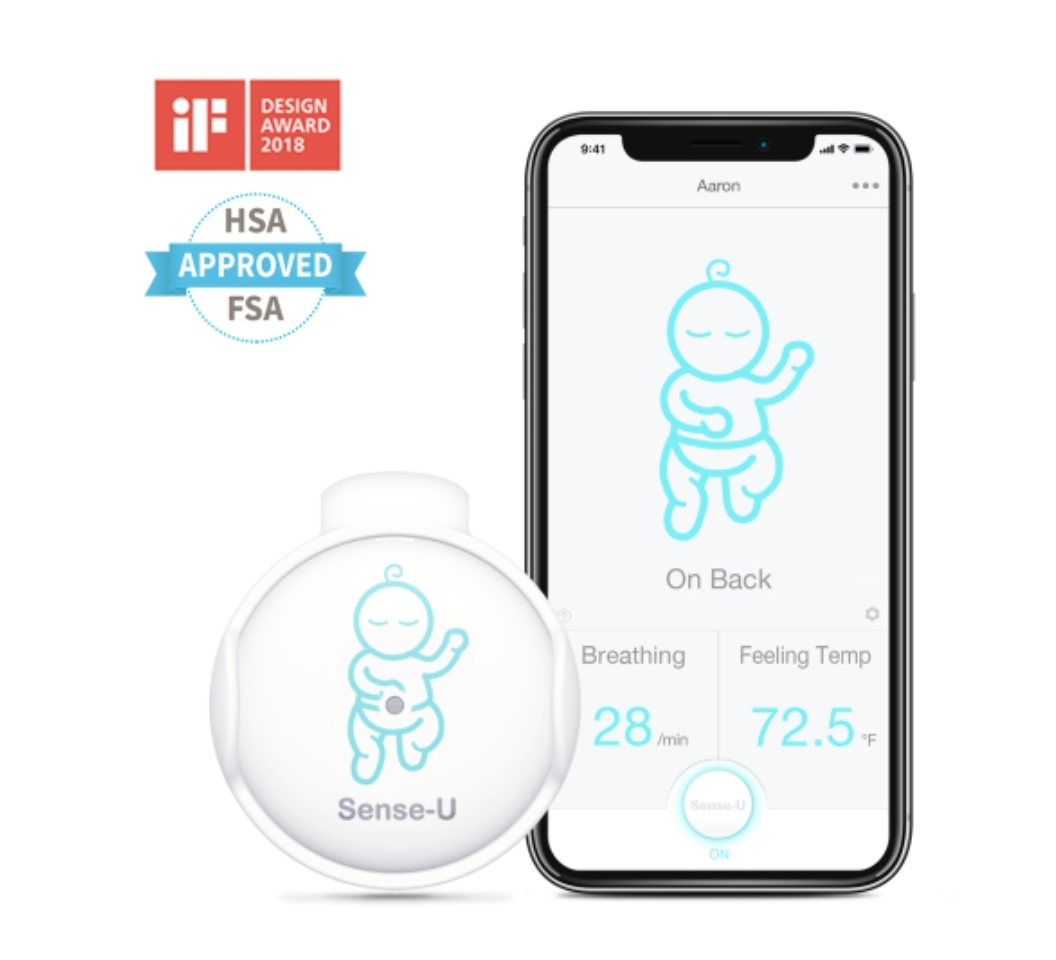
One of the newer categories, movement and wearable baby monitors are designed to sit on or under baby’s clothing, or even crib bedding, and capture details like breathing patterns. With some, you will receive an alert if no motion is detected for 20 seconds. They can also include things like temperature sensors, oxygen level, and heart rate measurement. For extra cautious parents and kids who might be born with an ailment that causes additional worry, these sensors can provide tremendous peace of mind. But unlike audio and video baby monitors, they typically do not pick up or transmit sound.
Some, however, work as part of a monitor system that includes a sound/video monitor as well as a movement sensor of some kind.
Connectivity options
Now that you understand the main types of baby monitors, here’s a breakdown of how they connect.
Wi-Fi
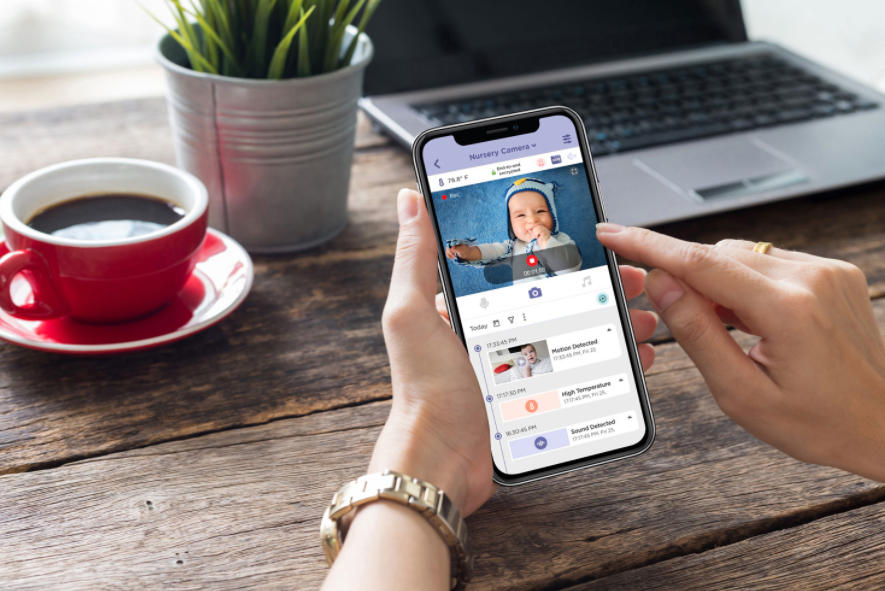
Wi-Fi or smartphone-compatible baby monitors work, as the name implies, over your home’s Wi-Fi network or the Wi-Fi network wherever you set them up. You would use the brand’s mobile app to set up the camera and monitor to connect to Wi-Fi then access the live feed from your mobile device and/or a separate monitor.
Wi-Fi monitors have the advantage of allowing you to tap into the feed from anywhere, which is great if parents want to keep an eye on baby while they’re at work and the baby is with a sitter, or for one parent whose working to be able to see what’s going on throughout the day.
Keep in mind, however, that you would need a compatible smartphone or tablet and a reliable Wi-Fi network at home. If you don’t have great Wi-Fi, you might want to steer clear of a Wi-Fi monitor to avoid any connectivity and lag issues. Also note that if your Wi-Fi goes down, this means the baby monitor won’t be accessible anymore.
If you do opt for a Wi-Fi baby monitor, make sure to use a secure password and network at home to prevent unauthorized access to your home, network, and private information through the baby monitor.
2.4/5GHz wireless

Wireless baby monitors that operate on the 2.4 or 5GHz spectrum work the same way as a cordless phone might, communicating when the two pieces are within range of one another. This should work through multiple floors of the average home, so you can have the camera (or audio monitor) in the baby’s nursery and be able to see the footage or hear the sound from the living room downstairs without issue.
The downside is that you don’t have any remote access so a parent or caregiver outside of the house can’t look in on the baby. But these types of baby monitors can be more reliable since they don’t rely on Wi-Fi, and won’t add more traffic to your potentially already stretched Wi-Fi network.
Multiple monitor systems
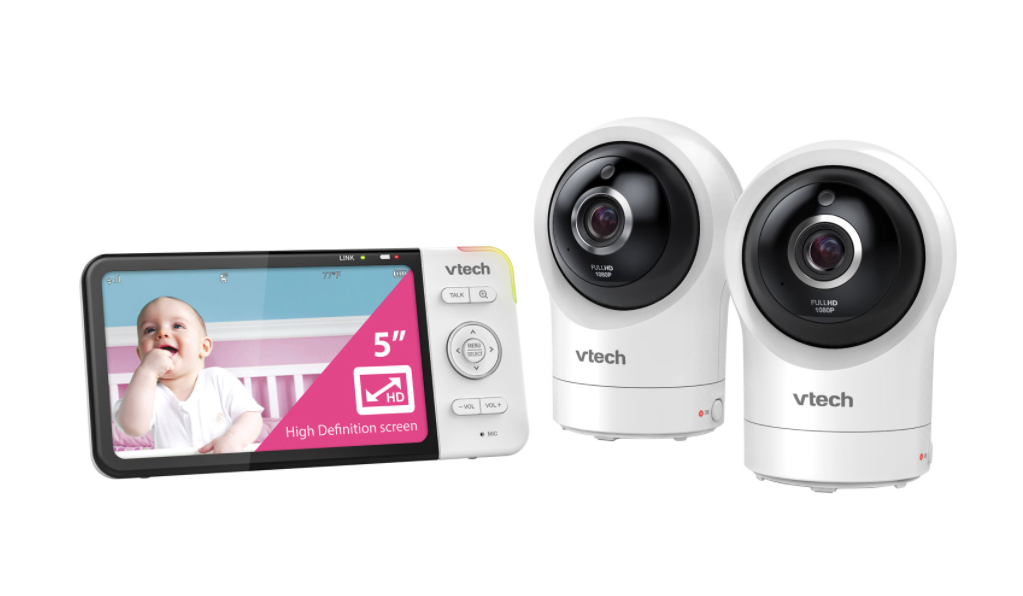
Some baby monitors work with multiple units. With audio-only baby monitors, a set might come with one unit to place in the nursery and two parent units so both parents can listen in from wherever they are in the house. With video baby monitors, some sets come with multiple cameras or can be expanded with additional camera purchases so you can monitor multiple kids and/or multiple rooms with one monitor unit. Some let you view all feeds on screen at the same time in a grid view or you can switch from view 1, view 2, and so on.
These are ideal if you have twins, two babies close in age, or a baby and a toddler. Even if the kids are in different cribs in the same nursery, you still want to position a camera right above each crib to get a good view of each child, especially if you want to do things like zoom in to check if eyes are open, or if your babies tend to move around a lot in their cribs.
Ideally, if you’re thinking about having another child but aren’t yet sure, you can opt for a video baby monitor that comes with one camera but that works with separately purchased cameras so you have the option to expand and still use the same unit. Or, you could use the second camera in another area of the home, like the playroom or living room where you have the baby swing for daytime naps. This way, you can safely cook dinner in the other room while keeping an eye on a baby strapped into their swing using the same monitor.
Essential features to look for in a good baby monitor
Now that you have narrowed it down to which type of baby monitor will suit your family best, it’s time to look at the added features worth getting and the qualities that any good baby monitor will possess. Go through this list to help you decide.
Reliable connectivity
As noted, if you are opting for a Wi-Fi enabled video monitor, you want to be sure that it is easy to connect to your Wi-Fi network and has an app that will work with your phone. Look for a brand that is known for simple one-touch connections and even offers Wi-Fi set-up help in their app. Peruse online reviews to get an idea of which model, and brand, you think you’ll feel most comfortable with.
Easy set-up

Ease of set-up will be important. If you are getting a video monitor, you want to ensure it comes with secure mounting hardware, with various options depending on if you plan to place it tabletop, on the wall, or even the ceiling. Wait until the nursery is set up and pinpoint the exact location you’ll place it so you can visualize it in the spot. For ones that require a Wi-Fi connection, make sure reviews indicate easy set up. For ones that function on the 2.4GHz or 5 GHz spectrum, set-up will likely just require charging both units and syncing them together if they aren’t already. If you’re not technically savvy, this might be the best route to go.
Clear audio
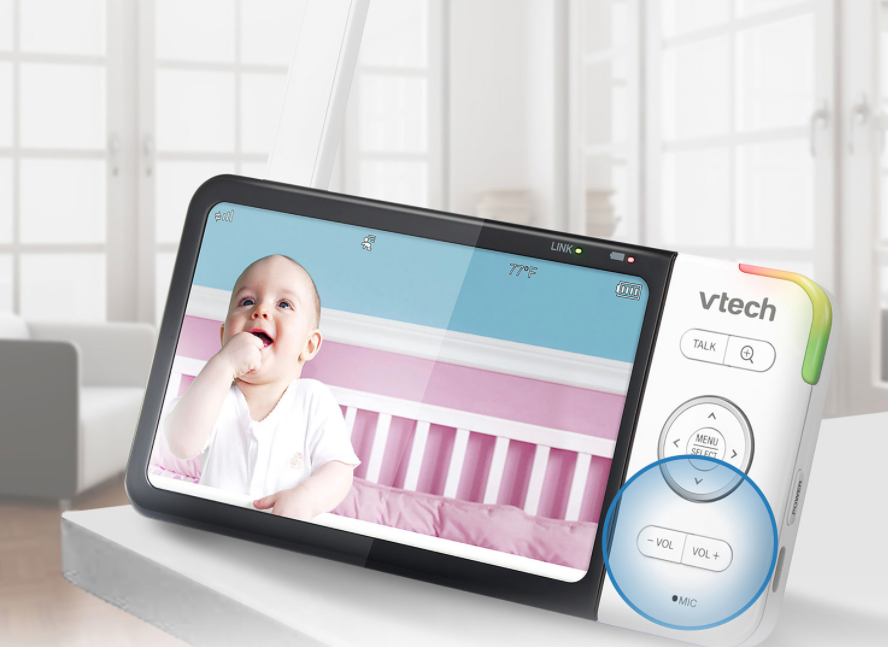
Whether it’s an audio-only or a video baby monitor, you want to make sure the audio is clear and that the volume can adjust accordingly. If you’re a deep sleeper, for example, you want one you can crank full blast overnight, but you might only need it at medium volume during the day. Check how many volume levels it has, especially if someone in the home is hard of hearing or, by contrast, has sensitive hearing.
High-resolution display
A video monitor with a subpar display is almost not worth getting. You want something that’s high resolution so don’t go any lower than 720p; ideally, splurge for a 1080p monitor, which will offer a crystal-clear image of a baby. It should also be in colour, particularly useful if you want to detect if there has been a diaper leak, spit up, or if the baby’s eyes are open or closed. This also makes still images captured for posterity much cuter! The screen should be large enough such that you can capture the entire crib without anything looking blurry or grainy.
Night vision
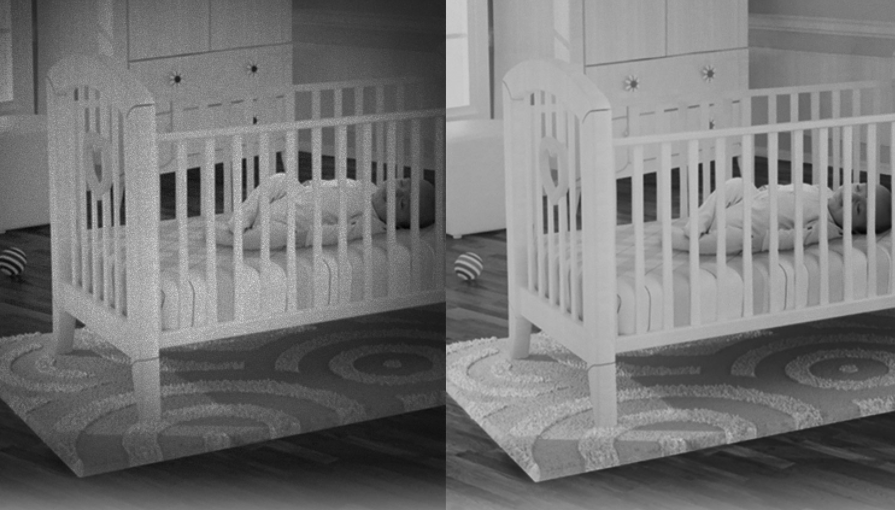
Along with a high-resolution and clear display, night vision is an important feature, especially since the lights will likely be out whenever the baby is having their nap or sleeping. A video baby monitor without night vision means you’ll be struggling to see anything on the screen once it goes dark. Night vision will capture baby in detail whether the lights are on or off, and the best ones will make it easy to even see the expression on their faces.
Pan, tilt, and zoom
One of the most important features of a video baby monitor is the ability for the camera to pan, tilt, and zoom. This will allow you to hone in on exactly where a baby is in the crib if they tend to move around, which is likely to be an issue as they get older and move on to the toddler stage. Panning left to right, tilting up and down, and zooming in (without getting grainy as it does so) means you can always get a perfect view. For zoom, check how many “X” it says and that effectively means how many times you can zoom in to get closer and closer. This also makes the camera useful once the baby has grown into a toddler, and even preschooler, as you can keep an eye on their antics when they crawl out of the crib or use the monitor for a playroom. If you don’t care about panning and tilting, and plan to mount the camera high enough that you can get everything you want in view, make sure it at least has a wide field-of-view.
Battery life
For parent units that are battery-operated, make sure it has a generous battery life, especially if you want to be able to move around with it throughout the day and not have to keep it plugged in or recharge constantly. For audio-only monitors, see what types of batteries they use, how long they last, and confirm that they are easily replaceable as needed.
Privacy
Privacy is critical, as noted, for Wi-Fi-enabled video baby monitors. If you are especially concerned, look for the one that comes with 128-bit encryption, which will protect any data and footage captured or received through the monitor. Some Wi-Fi video baby monitors even have a special privacy mode allowing you to switch the camera off remotely any time you want in the event of a potential breach.
Common secondary features in baby monitors
Remote viewing

All Wi-Fi video baby monitors come with remote viewing capability, which is useful if you or your partner is heading back to work and wants to be able to check in every now and then. It’s also great if the baby will be left with another caregiver. If you will be home, solely taking care of the baby, this feature might only be a nice-to-have and not worth the extra bucks for a Wi-Fi model.
Room temperature monitoring
Many video baby monitors can capture the temperature in the room and display or alert you if it gets too hot or too cold. This can prompt you to open or close a window, for example, adjust the thermostat accordingly, or, for older toddlers when it is safe to do so, provide or remove a blanket.
Sound/motion activated display
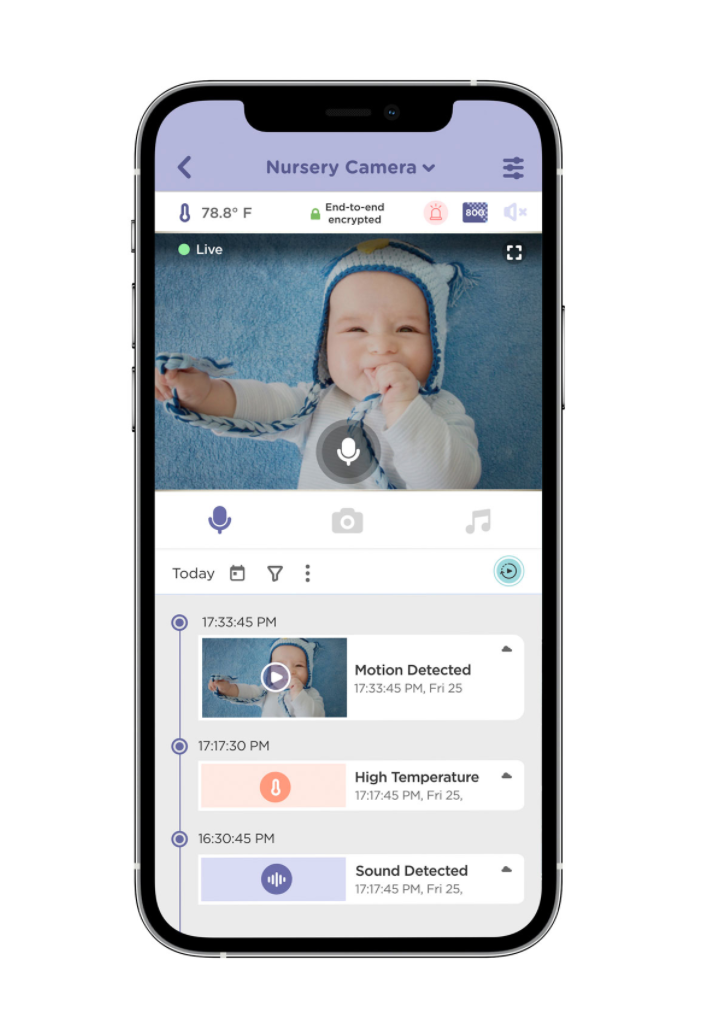
Helping to conserve battery life and allowing you to keep an eye on what’s going on hands-free, some video baby monitors are sound or motion activated so the screen will only light up when sound is detected. This is perfect if you’re in the middle of cooking, washing dishes, or in the shower. You won’t have to run over and tap a button to wake up the screen to see what’s going on.
Video and picture recording
Some video baby monitors let you record moving video for posterity, or capture still images to send to a partner or grandparent. It’s one of those nice-to-have features for those who love keeping scrapbooks and chronicling every memory. If there’s a particularly cute moment, take a screenshot remotely without disturbing your little one.
Movement sensors
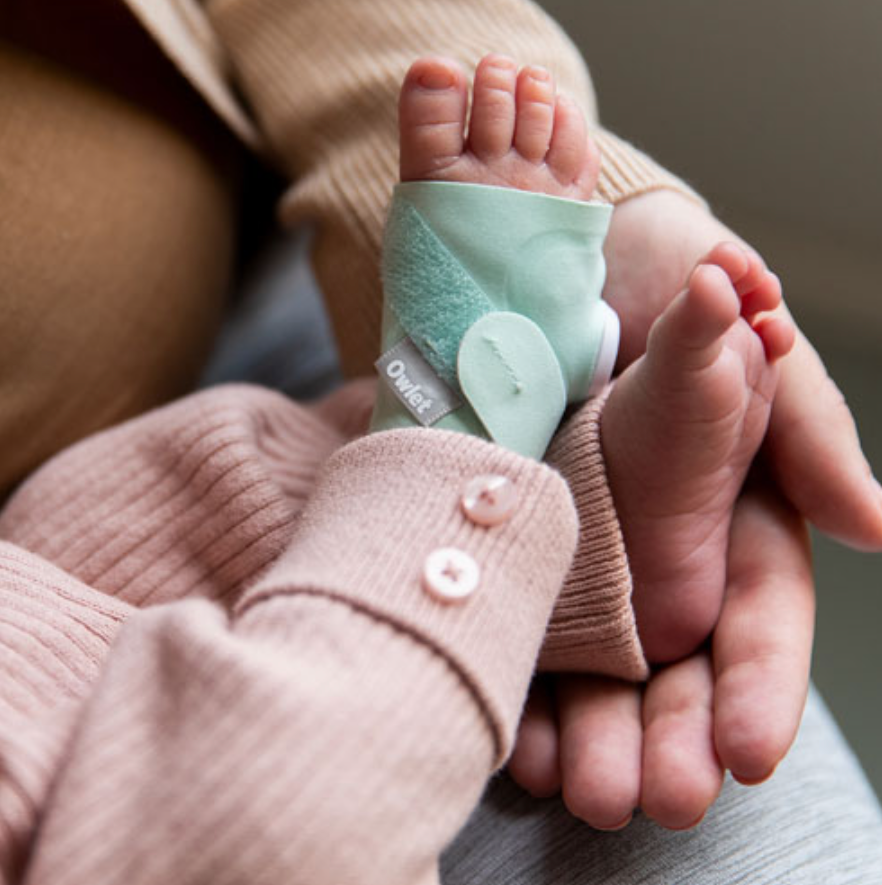
Movement sensors will alert you when a movement is detected so you know to check on things. Some come in the form of sock baby monitors that are either sold on their own or alongside a video baby monitor. These fit on the baby’s foot and communicate with your phone via Bluetooth to send an alert if an irregular heartbeat or breathing level is detected. As mentioned, other movement sensors slip under the crib bedding to alert you if no motion is detected for a set period of time.
Two-way talk

These are perfect if your baby simply needs to hear your soothing voice in order to fall back asleep, tired parents can tap the two-way talk button to say a few calming words, setting their baby back to sleep without having to get out of bed. This is especially great for babies who tend to wake often in the night and simply need to hear a voice to reassure them. This feature is also great for future-proofing the purchase since it can come in handy, years down the line. Use the monitor and the two-way talk in another room of the home. It could be the child’s playroom, the living room where they play, or even the garage to let your spouse know it’s time to come in for dinner.
Built-in lullabies
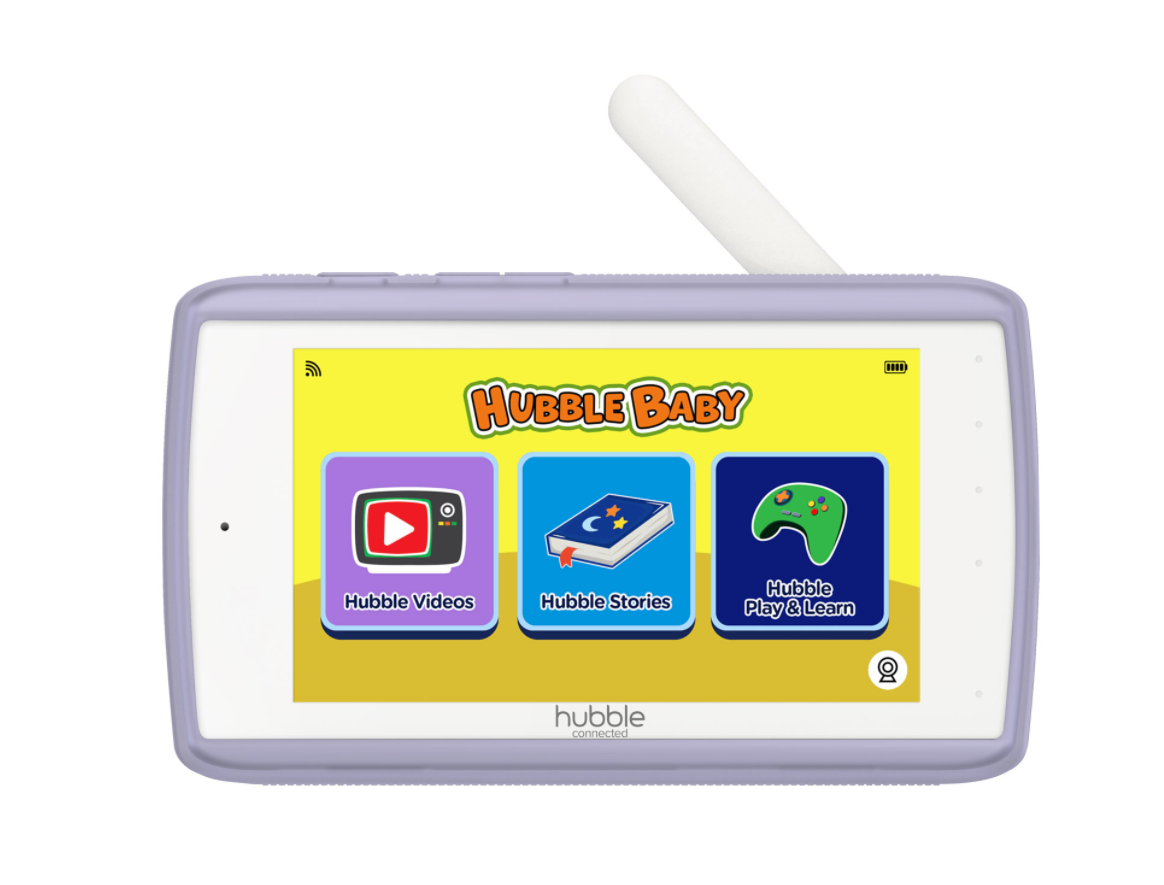
Some baby monitors have built-in lullabies of common songs like Twinkle, Twinkle Little Star, or even bedtime stories you can play to help lull your baby to sleep, or back to sleep if they stir in the middle of the night. This can be useful if you find your little one responds well to music. It will also help parents catch some extra ZZZs when needed.
Once you have gone through this guide, you’ll be well on your way to determining the best baby monitor to meet your needs. You might find that a combination of multiple baby monitors, including a video baby monitor along with a movement sensor, might be what you desire. As noted, in some cases, these come together as a package.
Take the next step

Whichever you choose, in most cases, baby monitors, even Wi-Fi-enabled video ones, require very minimal set-up. So, they’ll be as easy to get going as a standard smart security camera.



